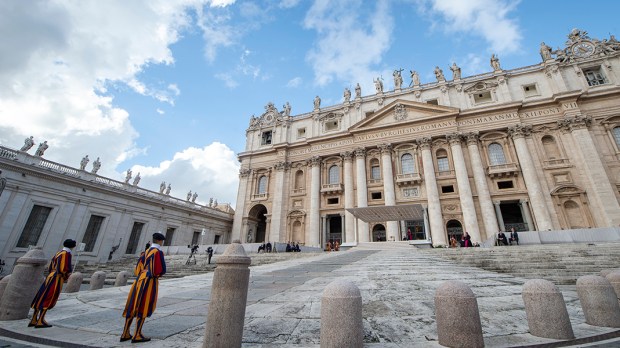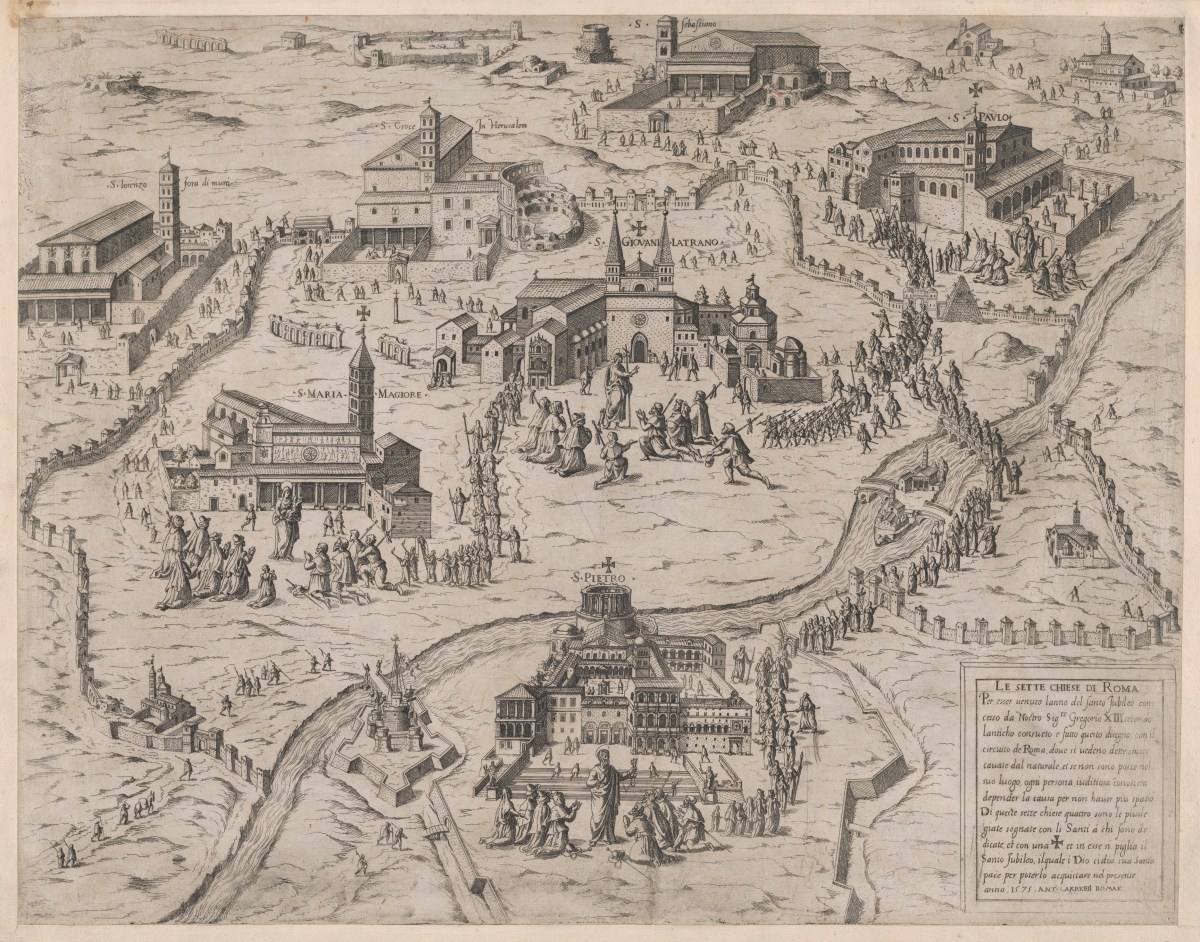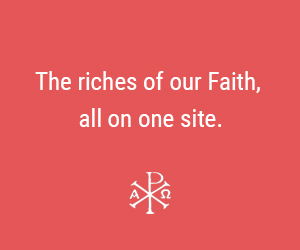The city of Rome has long been an important pilgrimage destination. Since the early 4th century, Christians have been coming to the Eternal City for its unparalleled religious significance. Only Rome offers the possibility of venerating the tombs of the apostles Peter and Paul, the early Christian martyrs in the Catacombs, and countless saints buried in churches throughout the city. Rome’s status as the “See of Peter” – the seat of the papacy – also offers pilgrims the chance to encounter the Pope, the Vicar of Christ.
In the Middle Ages, the storied pilgrimage routes leading to Rome – such as the Via Francigena – were teeming with pilgrims and wayfarers alike. Once in Rome, pilgrims stayed on a while for devotion in the numerous churches. In time, an additional urban pilgrimage developed.
Known as the “Seven Churches of Rome,” the route included the four major basilicas of St. Peter’s Basilica, St. Paul Outside the Walls, St. John in Lateran, and St. Mary Major, as well as three minor basilicas: St. Sebastian’s, Holy Cross in Jerusalem, and St. Lawrence Outside the Walls. Pilgrims would navigate by looking for the tall obelisks in the squares in front of the churches.
In the 16th century, St. Philip Neri began walking the route initially as a personal devotion. He soon began attracting crowds, particularly during Lent. At each church, he would lead in prayer and song, and offer a reflection. Afterward, simple foods and beverages would be served. The sacred itinerary provided an alternative to the raucous goings-on widespread in Rome during Carnival.
Today the route is still popular during Lent as well as around the feast of St. Philip Neri. The route – roughly 20 kilometers (13 miles) – is the same as in centuries past. However, the modern urban landscape of Rome has considerably altered the dynamic. Speeding Vespas, crazed Roman taxi drivers, and insane six-point intersections were not hazards St. Philip Neri and his companions had to reckon with. The obelisks, once the highest structures in the city, are today obscured by 19th-century apartment buildings.
As such, though the entire walk can still be accomplished in one day, most modern pilgrims choose to modify it a bit. Many prefer to do it in two or more days. Others walk parts of it and use taxis or public transportation for the rest.
Despite the difficulties for today’s pilgrim, the Seven Churches of Rome itinerary features innumerable attractions – spiritually, culturally, and artistically.
1. St. Peter’s Basilica
The Seven Churches of Rome itinerary begins at the renowned Basilica of St. Peter in Vatican City.
Though not referred to scripturally, multiple ancient texts and traditions refer to St. Peter being executed in Rome during the persecutions of Emperor Nero in 64 AD. The site was a circus, or racetrack, on Vatican hill outside the city. The local Christian community buried his body in a nearby necropolis, or graveyard, and an inconspicuous shrine was erected to mark the spot.
When Emperor Constantine legalized Christianity in 313, he ordered a larger basilica built over the existing shrine. During the Renaissance era, the Constantinian basilica was leveled and the current church constructed. Archaeological excavations conducted in the 20th century confirmed the presence of Peter’s tomb as well as the likelihood of his relics.
Built over the tomb and remains of St. Peter, the church is a testament to Christ’s words to St. Peter in the Gospel: “You are Peter, and upon this rock I will build my church” (Matthew 16: 18).
The faithful can spend as much time as they want in the Vatican and still not take in all there is to see and experience: the Museums and Gardens, the Scavi archaeological site, the Tombs of the Popes, a climb to the top of the dome, and enough artistic masterpieces to fill volumes of books.
Must-see highlights in the Vatican include a tour of the Scavi, the Vatican Museums, and the Vatican Gardens. In St. Peter’s, visitors can see include Michelangelo’s Pietà and the tombs of Sts. John Paul II and John XXIII. Throughout the basilica are relics and statues of saints.
The focal point in the main nave is the main altar beneath Bernini’s monumental bronze canopy. Beneath it is a recessed area showcasing a reliquary containing the Pallium of St. Peter. Below that is St. Peter’s tomb.
2. Basilica of St. Paul Outside the Walls
The second stop is to the tomb of Peter’s companion and the other patron saint of Rome: the Basilica of St. Paul outside the Walls. The six-kilometer (4-mile) route heads down the Via della Conciliazione, winds along the Tiber River, traverses Rome’s famed Trastevere neighborhood, passes through the San Paolo city gate and then by the ancient pyramid of Caius Cestius, and finally continues down Rome’s storied Via Ostiense road that once led to the ancient Roman port of Ostia. There the pilgrim arrives at the Basilica of Saint Paul outside the Walls.
St. Paul was a great evangelizer whose prolonged journeys, preaching, and missions to the pagans led to his title, “Apostle to the Gentiles.” According to the Scriptures, Paul was brought to Rome in chains to answer to charges of sedition (Acts 28:1-31). Though not explicitly stated in the Bible, ancient traditions and texts refer to his martyrdom in Rome in 66 AD also under the reign of Nero. It is believed he was decapitated at the site of the present Abbey of the Tre Fontane about three kilometers (two miles) away.
The Basilica of St. Paul follows a similar trajectory to St. Peter’s. When Paul was executed, his followers erected a nondescript memorial cell (cella memoriae) over the site of his tomb. In the 4th century, Constantine built a larger basilica over the burial shrine.
The current church was built in 1826 after the previous one was destroyed in a fire. Recent archaeological excavations indeed confirmed his tomb beneath the main altar of the basilica.
The Basilica of St. Paul is one of Rome’s most majestic churches. Being outside the city center, it is generally less crowded than St. Peter’s and offers a more spiritual ambiance.
Upon arrival, visitors are met with the impressive covered portico (or narthex). On the right is the Holy Door only opened during the Jubilee.
The interior boasts a grandiose and spacious nave with four side naves. Of note are the portraits of the popes, mosaics, the courtyard, and art gallery.
The 80 columns and wood and stucco-decorated ceiling are equally impressive. In the apse is a mosaic of Christ flanked by the Apostles Peter, Paul, and Andrew and St. Luke.
In the confessio, or the recessed area beneath the main altar, is the tomb of St. Paul. There is also a chain believed to have held him in custody. Recent archaeological studies have confirmed the finding of the tomb.
The other five churches on the itinerary will be the topic of Part II.
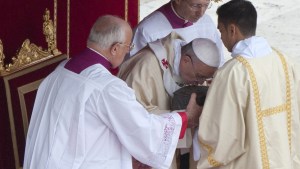
Read more:
The incredible story of the hunt for St. Peter’s bones
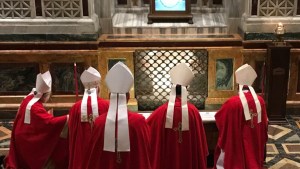
Read more:
Bishop Barron: A prayer at the tomb of St. Paul
